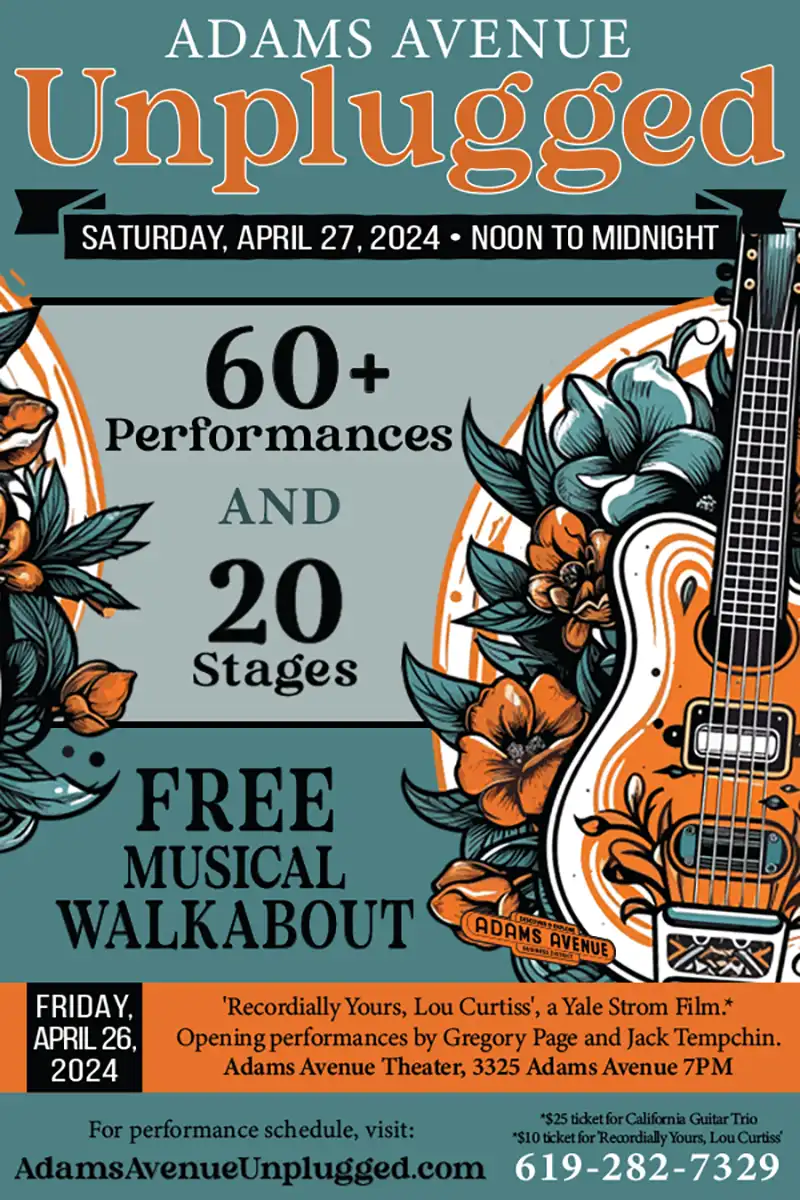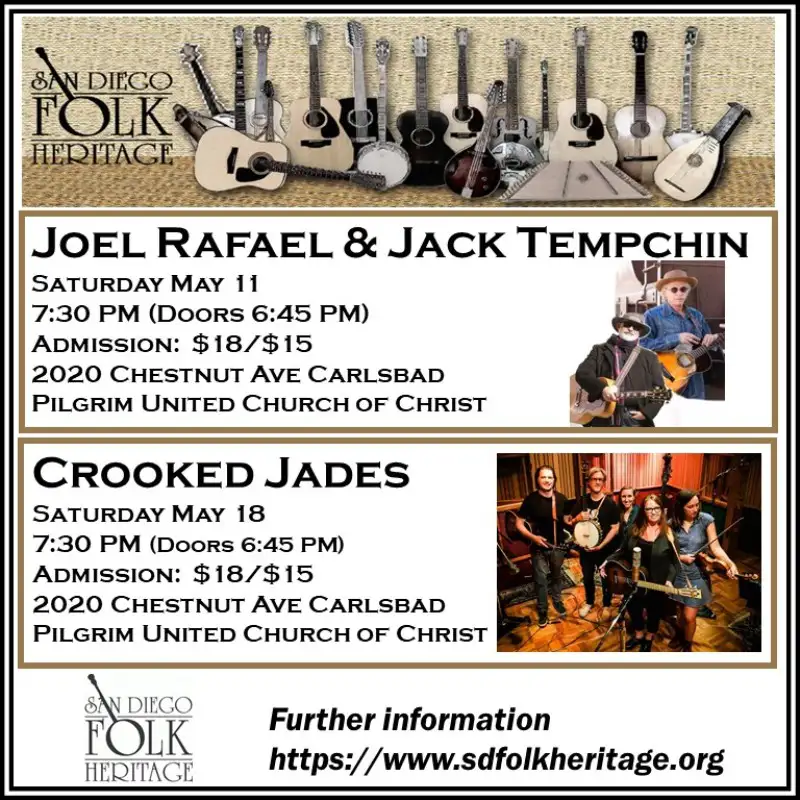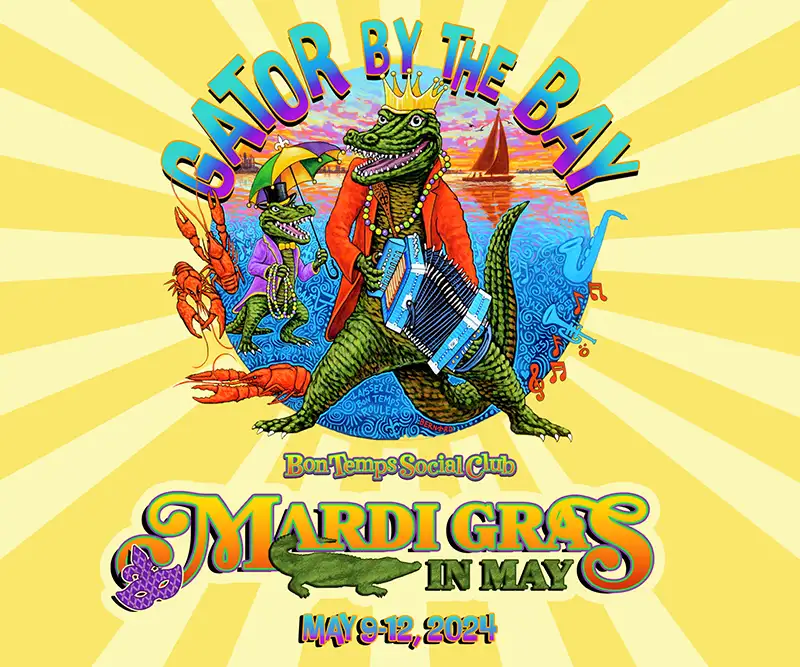Featured Stories
Balboa Park’s Spanish Village Art Center: Where There’s Art, There’s Family
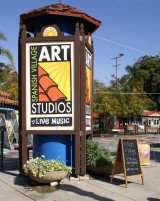
Entrance to Spanish Village. Photo by Liz Abbott.
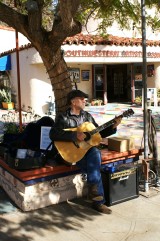
Guitarist Don Strandberg provides music on the patio. Photo by Liz Abbott.
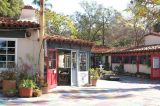
Spanish Vilage courtyard. Photo by Liz Abbott.
The first artist colonies did not start in America. Yet, by concept, they are quintessentially American. Instead of communities built upon history, geography, and blood ties, they are attempts to carve out social spaces based on like-minded spirit and ideas.
The first art colonies date back to Europe and the early 19th century. Romantic and anti-industrial, the original colonies saw artists leaving the soot and congestion of the cities for the surrounding villages. There, in those pastoral, rural settings, artists, usually painters, could find subject-matter, lighted by the natural sun, that stood still longer and moved at a slower pace than the bustling objects of the city.
Disrupted by the various continental wars, especially World War I, the artist colony movement lost steam in Europe by 1920. Meanwhile, similar colonies had been forming in the U.S. since the 1870s. Reflective of the immigrant and westward expansion that fueled the U.S. after the Civil War, the American artist colonies provided an instant, intellectual glue that held many new-found communities together. As new towns sprang up almost daily, the artist colony was an easy way to apply social adhesive to groups of otherwise strangers, often European artists who had already attempted such utopias in their former homelands.
By the early 20th century, American art colonies had nestled into the country’s mountains, plains, and hollers from coast to coast, especially in California, a state that proved to be a magnet for small, breakaway groups that united around common artistic, religious, and philosophic principles.
Often, these colonies died away with their founding members. Or, they evolved into entities far afield from their humble beginnings. With needed attention to the bottom line, many colonies drifted into commercial, tourist-related interests. The Bohemian Grove north of San Francisco started as a colony of some 100 artists and free thinkers. Fifty years later, however, it has retained its bohemia in name only, lending its grounds as a meeting place for the U.S. political and conservative business elite.
In San Diego, the Grossmont Art Colony was founded in 1910 by opera singer Ernestine Schumann-Heink and real estate venturers Ed Fletcher and William Gross. The goal was twofold. In its time it certainly did attract a growing list of reputable painters, poets, musicians, and writers including Owen Wister, author of The Virginian. But, it also served as a theme for the Fletcher-Gross real estate development that would later become Mount Helix and Fletcher Hills. Typically American, the Grossmont colony sought to combine the arts with profit.
While the purity of many artist colonies grew dubious, new colonies sprang up with America’s Jazz Age and the resulting “counter-cultural” direction taken by popular culture. For example, the Harlem Renaissance was a loosely-knit grouping of New York African-American artists and writers, who worked to elevate black culture into the same orbit as white America. Another example: the Black Mountain College sought to provide a communal, creative atmosphere within the skeleton of academia by offering a curriculum and degree system. Yet, from this platform of formal stability, it also allowed the American avant garde, spearheaded by composer John Cage, to take root.
With the Great Depression and then the industrial unionism of World War II, the artist colonies also became not only artistic but political as well. Now, a whole new sector of leftist intellectuals, curious professor-types, and hitchhiking middle-class students added revolutionary discourse and debate to the colonies’ previous commitments to pure Art.
By the 1950s, the counter-cultural movement took over whole neighborhoods including New York’s Greenwich Village and San Francisco’s North Beach, thus providing national meccas for young people and artists. The hippie communes and urban enclaves such as Haight-Ashbury of the 1960s only further solidified the artist-colony concept as a permanent part of the American fabric. Today, the tradition is continued by any number of hipsters, urban tribalists, BoBos, occupiers, and, sometimes, actual artists!
Balboa Park’s Spanish Village is a throwback to the earliest and purist form of artist colonies. It is self-run by artists whose first tenet is to produce art. And, stepping onto the grounds of the Spanish Village Art Center is itself a reminder of that simpler time, before big-box commercialism on one hand and anti-establishment poseurs on the other diluted our ur-lust for primal creativity.
Housed in the labyrinthine cluster of buildings just north of the Natural History Museum and south of the miniature railroad next to the Zoo, Spanish Village was founded right after World War II. (The buildings and flowered courtyard, themselves a picturesque vignette of some Sevillan juderia or Venetian waterway-sans-gondolas, were built a decade earlier as part of the 1935 Panamerican expo.)
The mission of the Village has never changed: Educate the public about art. As Village president Elizabeth Woolrych explains: “We want to share our techniques with the greater San Diego community.” Woolrych, a potter and ceramics sculptor who has been active in the Spanish Village for 31 years, teaches an ongoing menu of classes as testament to the Village’s community outreach. Before budget cuts in the San Diego city schools, she was also active in bringing students to the Village for a variety of hands-on workshops.
Michelle Gonzalez, a plein air painter and member of the board, echoes this commitment to the community: “It’s always nice to meet the actual artist. That’s why all members are required to sit in their studios. That way, we are here when the public comes to visit.” As one of her functions on the board, Gonzalez also organizes music from Friday through Tuesday in the Village courtyard. “Most of the musicians are solo instrumentalists. But, sometimes we’ll get a duet. Right now, we have musicians playing Brazilian, Flamenco, smooth jazz, and even the bouzouki.” The music only adds to the already-festive air in the Village. Since all of the artists are required, as part of their membership, to spend some time in their studios each week, there is always some pulse of activity, with studio doors always open and waiting for the curious to drop in.
Besides finding this constant buzz of activity, visitors are also struck by the high-quality standards that each artist and studio maintains. This is ensured by restricting Village membership to only the most dedicated artists. Prospective members must submit to a “jury process,” explains 12-year member Judy Stinton. “We are looking for working professionals. We are looking for artists who are unique. Though we are geared toward arts and crafts, we don’t want schlock art.” Stinton, a jeweler and textile artist, adds another requirement: “Artists must produce 80% of their work on-site. This again ensures that there are always artists working in their studios.”
There are nearly 40 studios and 200 artist-members who belong to the Spanish Village Arts Center. Many work independently, especially the photographers and mixed-media artists. And, many are members of the six active guilds: the Glass Guild, Potters’ Guild, Woodcarvers’ Guild, Southwestern Artists’ Association, Enamel Guild, and Sculpture Guild. Besides holding court in their own studios, members will often travel the art show circuit to show and sell their wares. The guilds can help members with these logistics.
Infused into all of this is a frenetic schedule of organized events in and around the Village. “We have between 15 and 20 exhibitions per year in our Gallery 21,” explains President Woolrych. (Gallery 21 is the Village’s larger show gallery and exhibiting is open to non-members. Often, the exhibits feature invited national and international as well as local non-member artists.) “We also have an Open House in July, Spring and Fall activities, and, of course, December Nights,” adds Woolrych. (December Nights draws about 250,000 people to Balboa Park over a single holiday weekend.)
The “big” upcoming show is the 37th annual Small Image exhibit, which runs January 27 through February 20. Held in Gallery 21, this show features pieces from all media. But, each piece must be smaller than 10 inches. In addition, there are always classes and camps that individual members list on the Spanish Village Arts Center website.
Membership is only one ingredient in the glue that holds this modern-day artists colony together. As mentioned, there is an elected board of directors with elected officers. Also, members are encouraged to work on the many committees, both permanent and ad hoc, that have been delegated to the tasks at hand. One member, who asked not to be identified, joked that “we have a committee for everything. Now, we just need more than the usual 18 people to volunteer.”
 For more information about this hometown treasure, go to www.spanishvillageart.com.
Editor’s note: In order to help link all of the San Diego arts together, the San Diego Troubadour will begin running articles that go beyond just music. Please look forward to future articles that deal with local, fellow artists, whom we, in our music circles, don’t always get a chance to meet.
Raul Sandelin is a San Diego native, professor of writing and cultural theory at Grossmont College and SDSU, and a senior copy writer at primus advertising.


